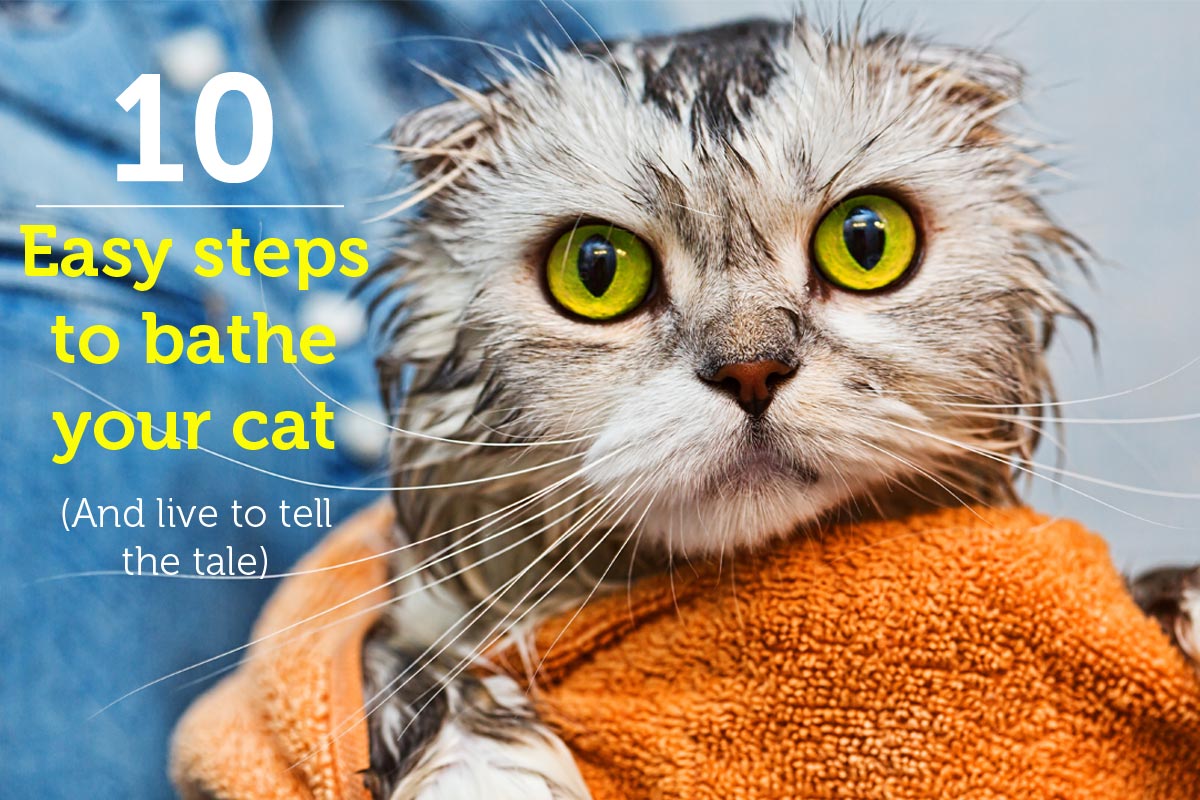They’re tiny but mighty! Barely detectable to the human eye, ear mites are eight-legged parasites that love to set up camp inside cats’ ears and feast on the wax and oils inside.
The ear mites may be having a ball during their three-week life cycle, but it’s definitely no picnic for your cat, as mites can cause itchiness and irritation of the ears.
How can you tell if your cat has ear mites … and more importantly, what can you do to stop them? Read on for everything you need to know about cat ear mites.
What Causes Ear Mites in Cats?
Ear mites are highly contagious and can easily hop from pet to pet.
These pesky parasites are passed through direct pet-to-pet contact in the home or outdoors, and through infested bedding.
Ear mites are very common in kittens due to shared living spaces at shelters or pet stores. Additionally, a mama cat can pass ear mites on to her kittens.
Outdoor cats that meet up with other critters in the neighborhood, including dogs, rabbits, rodents and other cats, get ear mites more often than indoor cats.
While ear mites are less common in older cats, cats of all ages can get ear mites. VetInfo estimates that 90% of cats will get ear mites at some point in their lives.
Symptoms of Ear Mites in Cats
Ear mite symptoms can range from mild to intense. One of the most common symptoms is discharge in the ear that resembles black coffee grounds. Other ear mite symptoms include:
- Intense scratching and rubbing of the ears
- Thick black or brown earwax
- Scratches or scabs near the ear
- Foul odor
- Hair loss
- Head shaking
- Inflammation of the ear canal
What to Do If You Suspect Your Cat Has Ear Mites
It’s important to treat your cat’s ear mites quickly because they can lead to cat ear infections. In fact, ear mites are to blame for 50% of cat ear infections.
Make an appointment with your vet if you think your cat has ear mites. If ear mites are confirmed, your vet will likely prescribe a medication to go directly in the ear or on the skin.
It’s important to check all the other pets in your home for ear mites too, including dogs and even guinea pigs. Fortunately for us humans, we’re immune to the mighty ear mite.
Also, be sure to wash all pet bedding and toys in hot water and vacuum your house thoroughly, as mites can survive on your cat’s hair and bedding.
Future ear mite prevention: Keeping the ears clean is the best way to avoid feline ear infections and ear mites.
Owners, pets, groomers and vets love this Cat Ear Cleaner because it’s fast-acting, alcohol-free for no sting or burn, gets rid of ear mites, and leaves no greasy residue behind.
My Cat is Scratching, But I Don’t See Ear Mites
Itchy ears. This is one of the most common reasons owners pack Fluffy up and head to the vet. A variety of conditions can give your cat itchy ears, such as yeast infections, allergies, bacterial infections, debris caught in the ear, or even fleas.
To get rid of the itch, clean your cat’s ears with an alcohol-free cat ear cleaner, and if the itch isn’t gone after a few days, make an appointment with the vet.
Do Guinea Pigs Get Ear Mites Too?
Not to be overshadowed by other household pets, guinea pigs can and do get ear mites. If your cat or dog has ear mites, be sure to keep your guinea pig away from them until the ear mite situation is under control.
If it looks like your guinea pig may have mites (scratching, scabbing or dark discharge in the ear), it’s best to call the vet right away, as an anti-parasitic drug is usually prescribed to clear up ear mites in guinea pigs.
What Now?
Now that you know that keeping your cat’s ears clean goes hand-in-hand with ear mite prevention, maybe you’re ready to start a cat ear cleaning routine. (Deep breath, it’s not that bad, and the earlier you start, the better!) Click here for tips to make cat ear cleaning easy.




